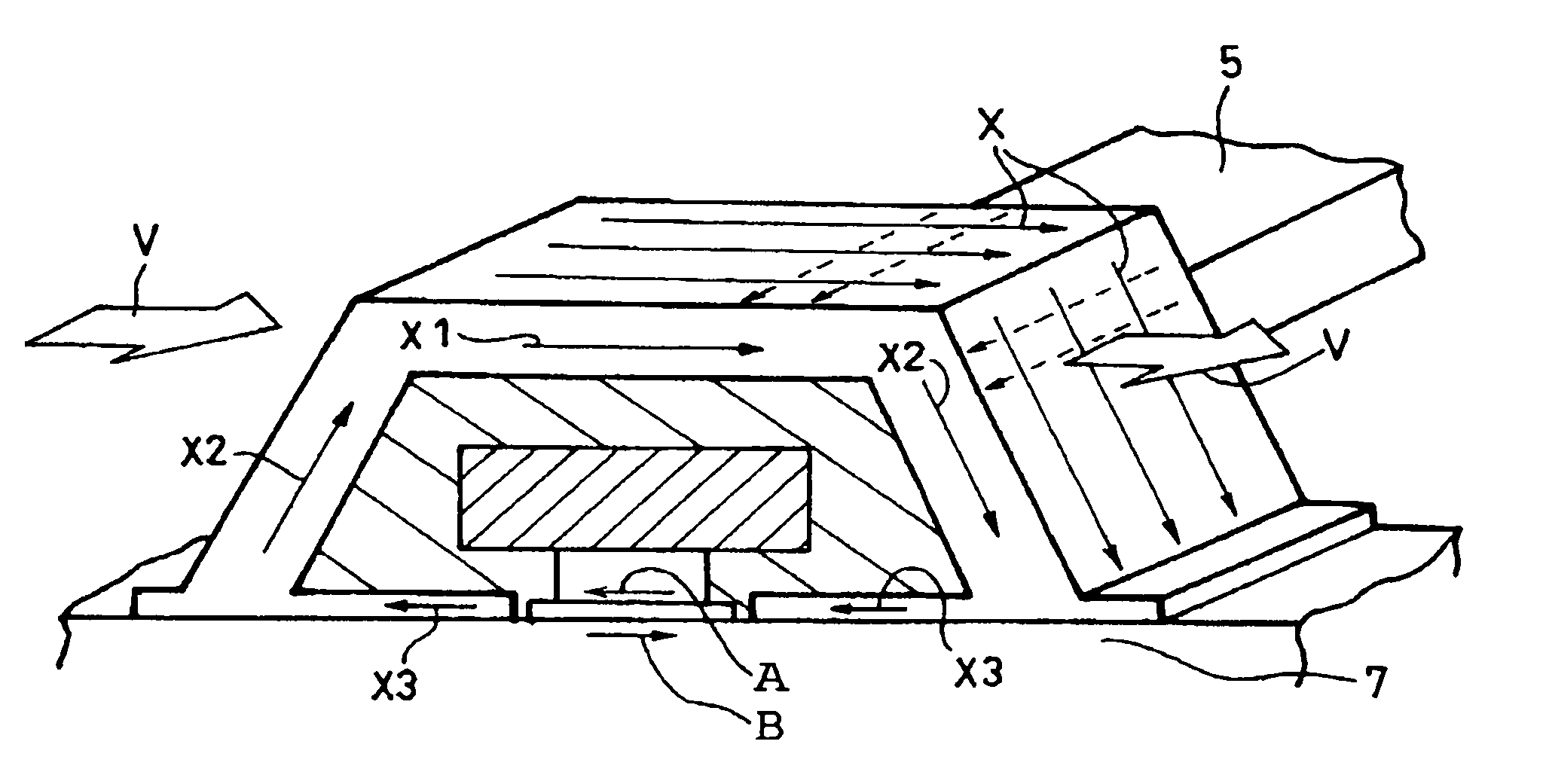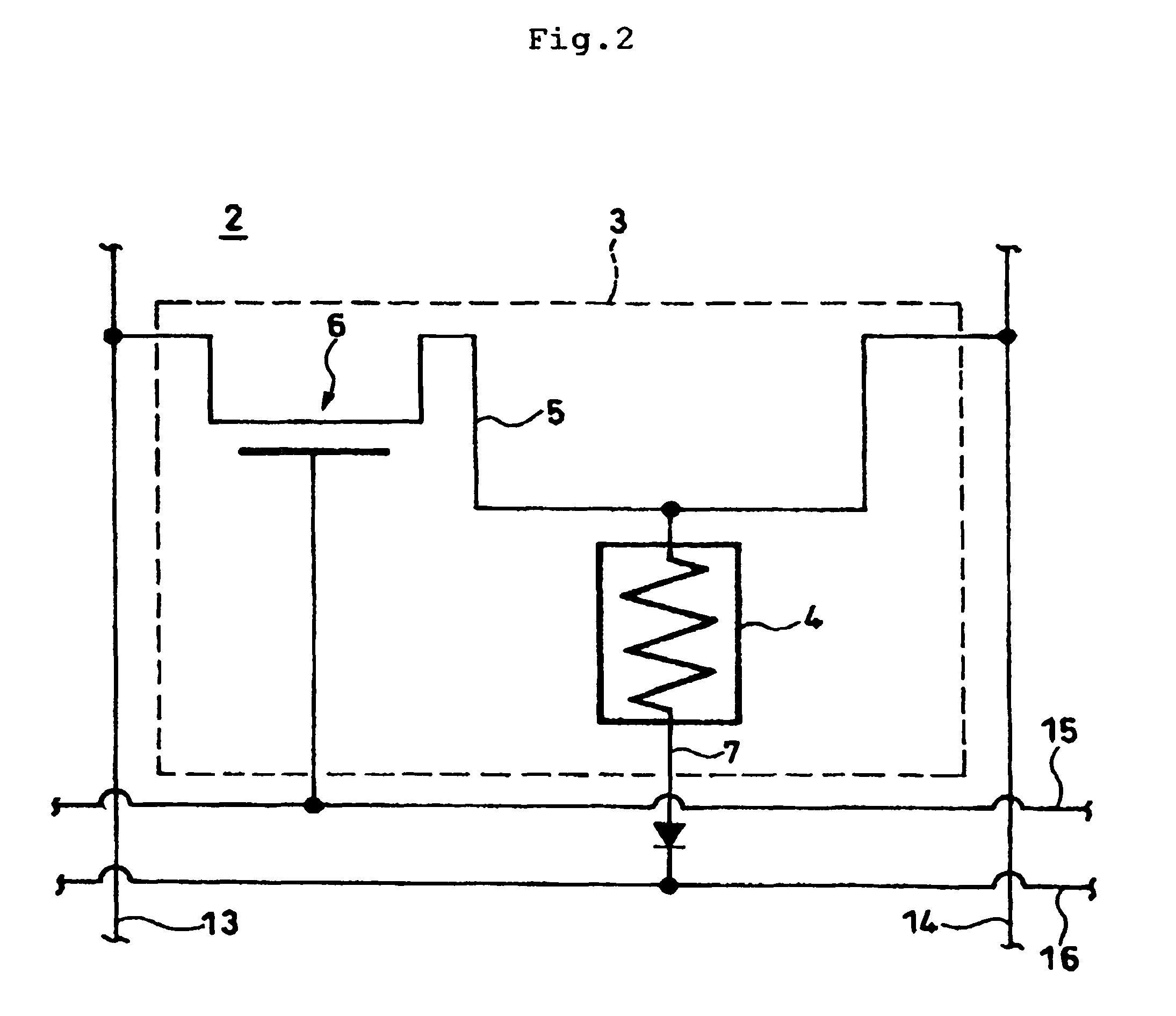Magnetic memory
a magnetic memory and memory technology, applied in the field of magnetic memory, can solve the problems of increasing the likelihood of writing errors, not always easy to have available power sources where these devices are used, and the inability to prevent the interfering magnetic field generated by adjacent lines within the package, so as to minimize the effect of writing errors and other effects of external magnetic fields on tunneling magnetoresistive elements
- Summary
- Abstract
- Description
- Claims
- Application Information
AI Technical Summary
Benefits of technology
Problems solved by technology
Method used
Image
Examples
Embodiment Construction
[0041]Several embodiments of the magnetic memory of the present invention will now be described with reference to the accompanying drawings, in which like numerals denote like elements so that the same description will not be repeated.
[0042]With reference to FIG. 1, overall arrangement of an exemplary magnetic memory 1 according to a first embodiment of the present invention is schematically shown. The magnetic memory 1 includes a storage unit 2, a bit selection circuit 11, a word selection circuit 12, bit lines 13, 14 and word lines 15, 16. The storage unit 2 includes an m×n two-dimensional array of storage areas 3 (m and n are each an integer of 2 or larger). As shown in FIG. 2 in an enlarged view, each storage area 3 includes a TMR element 4, a read / write line 5, a read / write transistor 6, a read line 7 and a ferromagnetic yoke structure (not shown). The read / write line 5 of each storage area 3 extends from one of the bit lines 13 so that each storage area 3 forms an independent ...
PUM
 Login to View More
Login to View More Abstract
Description
Claims
Application Information
 Login to View More
Login to View More - R&D
- Intellectual Property
- Life Sciences
- Materials
- Tech Scout
- Unparalleled Data Quality
- Higher Quality Content
- 60% Fewer Hallucinations
Browse by: Latest US Patents, China's latest patents, Technical Efficacy Thesaurus, Application Domain, Technology Topic, Popular Technical Reports.
© 2025 PatSnap. All rights reserved.Legal|Privacy policy|Modern Slavery Act Transparency Statement|Sitemap|About US| Contact US: help@patsnap.com



